#geographic information system(gis)
Explore tagged Tumblr posts
Text
Reading papers and stumbled upon a


#Geographic information systems (GIS) and entomological research: A review#from 2010#how many other people has it tripped up#i say things
914 notes
·
View notes
Text
finally continuing to watch fantasy high because god hates me and the data i need for my GIS final is taking Forever to load
the file is so upsettingly large that it takes a minute to load anytime i try to do Anything
i'm trying to make it Smaller :(
15 notes
·
View notes
Text
GIS In Our Daily Lives
The involvement of Geographic Information Systems (GIS) in our daily lives is pervasive, influencing and enhancing various aspects across different sectors. The integration of GIS into everyday activities has become integral for decision-making, planning, and optimizing resources. GIS helps city planners and transportation experts to provide them with information like maps, satellite pictures, population statistics, and infrastructure data. GIS helps them make better decisions when designing cities and transportation systems that are sustainable and good for the environment.
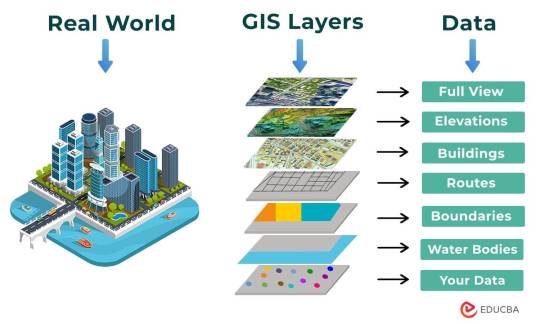
The following points elucidate the notable involvement of GIS in our daily lives:
Navigation and Location Services: GIS provides monitoring functions through the visual display of spatial data and precise geographical positioning of monitored vehicles, whereas GPS provides accurate, clear, and precise information on the position and navigation of a monitored or tracked vehicle in real-time and at the exact location.GIS is at the core of navigation applications and location-based services on smartphones. It enables accurate mapping, real-time navigation, and geolocation services, assisting individuals in finding locations, planning routes, and navigating unfamiliar areas.
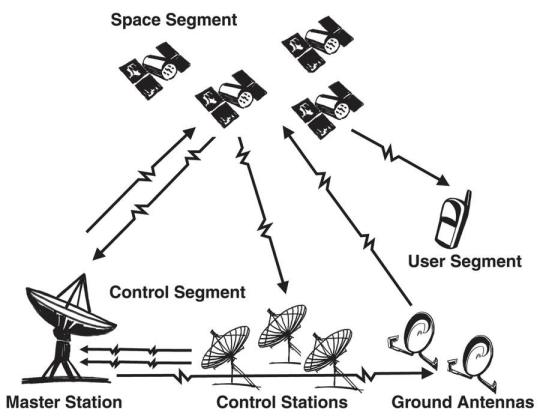
E-Commerce and Delivery Services: GIS software is a powerful tool for supply chain network planning. It helps determine the optimal location for distribution centers, warehouses, or other supply facilities. GIS is utilized in logistics and delivery services for optimizing routes, tracking shipments, and ensuring timely deliveries. E-commerce platforms leverage GIS to enhance the efficiency of their supply chain and last-mile delivery processes.
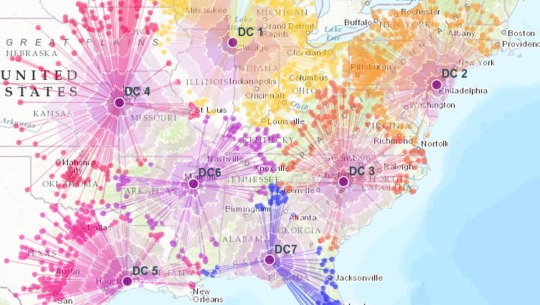
Weather Forecasting and Disaster Management: Many states are using GIS dashboard to monitor the rainfall across the state, on a real-time basis, from the data shared by rain sensors installed at various locationsGIS plays a crucial role in weather forecasting and disaster management. It assists meteorologists in analyzing spatial data, predicting weather patterns, and facilitating timely responses to natural disasters by mapping affected areas and coordinating emergency services.
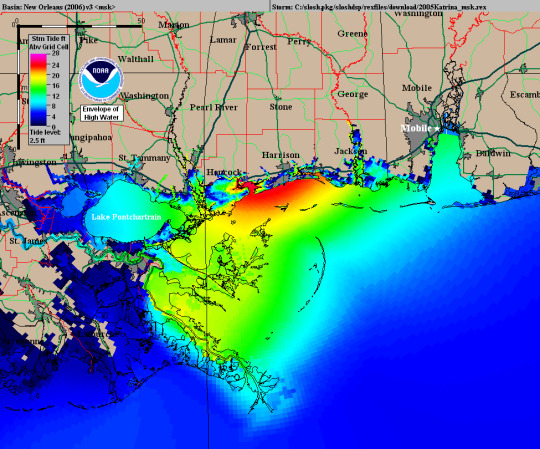
Healthcare Planning and Disease Monitoring: Geographic Information Systems enable the visualization and monitoring of infectious diseases. Additionally GIS records and displays the necessary information that health care needs of the community as well as the available resources and materials. GIS supports public health initiatives by mapping the spread of diseases, analyzing healthcare resource distribution, and assisting in the planning of vaccination campaigns. It aids in identifying high-risk areas and optimizing healthcare service delivery.
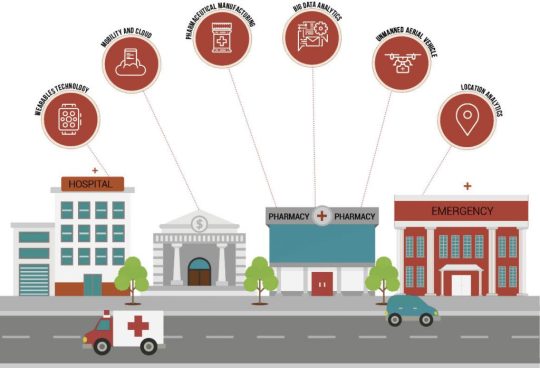
Social Media and Geo-tagging: GIS also helps in geotagging and other location related information in posts, it’s tools can map and visualize the spatial distribution of social media activity. This analysis can reveal trends, hotspots, and patterns in user engagement across different geographic areas. Many social media platforms incorporate GIS for geo-tagging, allowing users to share their location and experiences. This feature enhances social connectivity and facilitates the sharing of location-specific information.
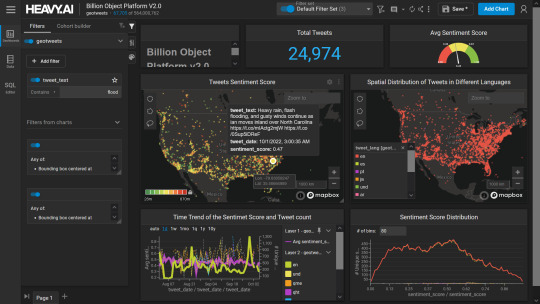
Smart City Initiatives: The Geographic Information System (GIS) offers advanced and user-friendly capabilities for Smart City projects and allows to capture, store and manipulate, analyze and visualize spatially referenced data. It is used for spatial analysis and modeling. It is the cornerstone of smart city planning, enabling the integration of data for efficient urban management. It supports initiatives related to traffic management, waste disposal, energy consumption, and overall infrastructure development.
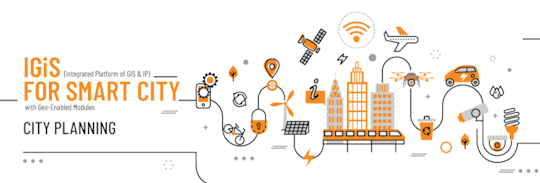
Education and Research: GIS is increasingly utilized in education and research for visualizing and analyzing spatial data. It enables students and researchers to explore geographic relationships, conduct field studies, and enhance their understanding of various subjects.
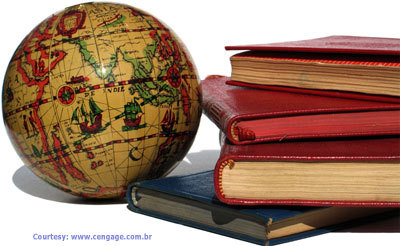
Agricultural Management and Precision Farming: Farmers leverage GIS to optimize agricultural practices by analyzing soil conditions, crop health, and weather patterns. Precision farming techniques, facilitated by GIS, contribute to increased crop yields and sustainable farming practices.
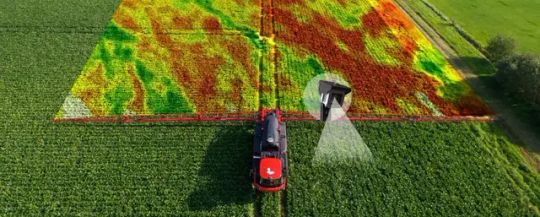
Real Estate and Property Management: In the real estate sector, GIS aids in property mapping, land valuation, and site selection. It provides real estate professionals with valuable insights into spatial relationships, market trends, and optimal development opportunities.
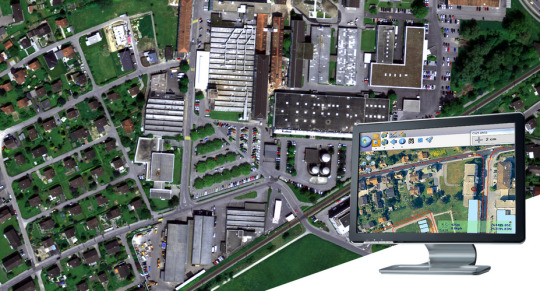
Tourism and Recreation: GIS enhances the tourism industry by providing interactive maps, route planning, and location-based information. It assists tourists in exploring destinations, finding attractions, and navigating efficiently.
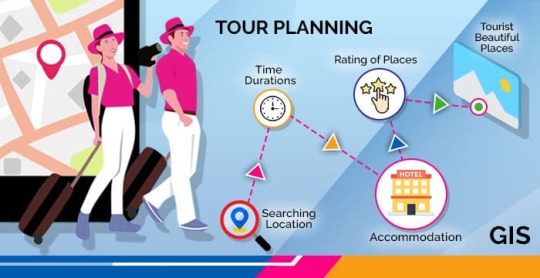
The broad and varied involvement of GIS in our daily lives underscores its significance as a technology that not only facilitates geographic data analysis but also contributes to the efficiency, safety, and interconnectedness of modern society. As GIS applications continue to evolve, their impact on daily activities is expected to further expand and refine.
#gis#architectdesign#architecture#city#education#geographic information system(gis)#geographical indication
13 notes
·
View notes
Text

2 notes
·
View notes
Text
i have finally made a good decision. i am going to get a gis certificate but probably not until next fall cause i wanna do another semester of polish and ive seen the schedule of classes and it interferes with my polish class unfortunately. grad school for linguistics will be shelved for another year. i also am not confident i would get in with my gpa and the thought of having to write a thesis scares me.
#gis is geographic information systems#its like mapping data and using that data make plans#at least i think it is#anyways i need a job to pay for that shit lol#at least the first class you have to take by itself and its only 2 credit hrs so i dont expect that first class to cost too much#and i have time until then#and i could also change my mind by next fall#at least i have money for polish next semester so long as i get a job like soon lol#i keep saying that#but this time fr#like fr fr fr#i now have close to no savings after paying off something i forgot about :(#thats my own issue i guess#anywaysssss#continues applying to retail jobs very cutely while i wait for government jobs to get back to me#apparently those take months to hire and i want one so desperately i do not want a tech industry job
5 notes
·
View notes
Text
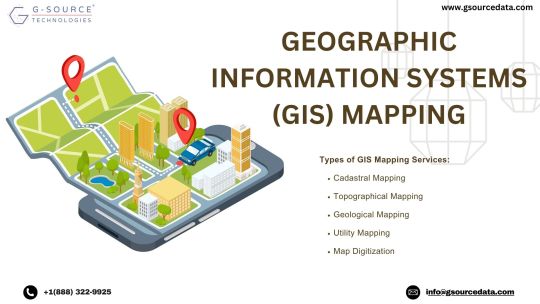
Geographic Information Systems (GIS) mapping services stand as the cornerstone of modern spatial analysis, bridging the gap between geographical data and informed decision-making. This dynamic technology seamlessly integrates diverse datasets onto a unified platform, yielding a comprehensive view of our surroundings. Within this realm, Gsource Technologies emerges as a leading force, offering a suite of GIS services that encompass a wide spectrum of applications.
From cadastral mapping, which aids in land administration and property management, to topographical mapping that captures the intricacies of terrain, Gsource Technologies' GIS expertise is all-encompassing. Their proficiency extends to parcel mapping, facilitating accurate delineation of property boundaries for effective land use planning.
With an eye on technological advancement, Gsource Technologies excels in map digitization, transforming paper-based maps into dynamic, interactive digital formats. Geological mapping, another specialized service, enables the identification and visualization of geological features, crucial for resource exploration and environmental studies.
Gsource Technologies' commitment to GIS services empowers urban planners to craft sustainable cities through spatial analysis, conservationists to safeguard ecosystems, and businesses to make data-driven decisions for growth. Moreover, their involvement in cadastral, topographical, parcel, map digitization, and geological mapping underscores their comprehensive approach to spatial data analysis.
In essence, GIS mapping services, coupled with Gsource Technologies' proficiency, reshape the way we perceive, analyse, and leverage geographical data. This synergy cultivates smarter urban development, environmental stewardship, and informed business strategies, ensuring a more sustainable and interconnected future.
#gsourcetechnolgies#engineeringservices#architecturedesignservices#GIS#geographic information system#cadastral#mapdigitization#architecturedesigns
3 notes
·
View notes
Text
Geographic Information System (Gis)
Utilize a Geographic Information System (GIS) to manage, analyze, and visualize spatial data effectively.
0 notes
Text
Interplay of Language & Sci-Tech: Exploring the Dravidian Languages
Interplay of Language & Sci-Tech: Exploring the Dravidian Languages @neosciencehub #SciTech #DravidianLanguages #Sciencenews #neosciencehub
The study of languages, particularly those with deep historical roots like the Dravidian languages, offers a unique vantage point from which to view the convergence of language, science, and technology. This article explores the various intersections where the Dravidian languages not only inform scientific inquiry and technological development but also benefit from them. It aims to provide a…
#AI#Digital media#featured#Geographic Information Systems (GIS)#Natural Language Processing (NLP)#sci-tech#sciencenews
0 notes
Text
#GISMappingSurveyinIndia#GIS Mapping Survey#GIS Mapping Company in India#Geographic Information System#DroneSurvey#aerialphotographysurvey#aerialSurvey#epitome
0 notes
Text
GIS stands for Geographic Information System. It is a framework for gathering, managing, analyzing, and visualizing spatial and geographic data. GIS integrates data from various sources and helps users understand patterns, relationships, and trends in terms of geography.
Key Components of GIS:
Hardware: Computers, servers, and devices that support GIS operations.
Software: Tools like ArcGIS, QGIS, or Google Earth for mapping and analyzing spatial data.
Data: Spatial data (maps, coordinates, satellite images) and attribute data (information about features, like population or elevation).
People: GIS specialists and users who analyze and interpret the data.
Processes: Methods and workflows used to collect, manage, and use GIS data effectively.
Applications of GIS:
Urban Planning: Designing cities, zoning, and managing land use.
Environmental Management: Tracking deforestation, water resources, and wildlife habitats.
Transportation: Route optimization, traffic management, and infrastructure development.
Disaster Management: Risk assessment, emergency response planning, and recovery efforts.
Utilities and Infrastructure: Monitoring power lines, pipelines, and communication networks.
Why is GIS Important?
GIS provides a unique ability to visualize and analyze spatial data, helping organizations make data-driven decisions in areas like resource management, urban development, and environmental conservation. By layering different types of data (e.g., demographic, topographic, or climatic), GIS creates powerful visualizations, making complex information easier to understand.
#construction#GIS#Geographic Information System#urban architecture#urban planning#disaster management
0 notes
Text
Gis&RS
I will do gis mapping digitizing, georeferencing, spatial analysis, remote sensing

#GIS&RS#Data analysis #google earth
#geographical information system#remot sencing#data analysis#visuilazation#google earth#q gis#arcgis
1 note
·
View note
Text
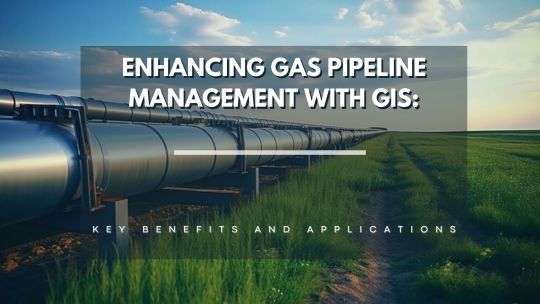
Enhancing Gas Pipeline Management with GIS: Key Benefits and Applications
In the energy and utilities sector, gas pipeline management is complex, requiring precision, safety, and a clear strategy for both existing infrastructure and future expansion. Geographic Information Systems (GIS) have revolutionized pipeline management by providing a spatially accurate, data-rich view of assets. From asset management and leak detection to route planning and demand forecasting, GIS is becoming indispensable for gas companies. This blog delves into the ways GIS transforms gas pipeline management, delivering benefits across safety, efficiency, cost-saving, and planning.
#benefits of using gis for gas pipelines#ensuring gas pipeline safety with gis tools#gas network analysis#gas pipeline asset management#gas pipeline gis mapping services#gas pipeline leak detection using gis#gas pipeline management in gis#gas pipeline mapping software#gas pipeline monitoring tools#gas pipeline risk assessment#gis applications in energy sector#gis for gas pipeline monitoring#gis for infrastructure management#gis in oil and gas industry#gis pipeline maintenance software#gis pipeline monitoring system#gis pipeline route planning#gis software for gas pipeline route optimization#victoryofgoodoverevil#gis solutions for pipeline maintenance and monitoring#gis-based pipeline integrity management#pipeline data management#pipeline geographic information systems#pipeline management solutions#remote sensing for gas pipelines#spatial analysis for gas pipelines#spatial data for gas pipelines
0 notes
Text
🌍 What is Geospatial Data? 🌍
Curious about how we map cities, forests, and even track environmental changes? Geospatial data is the answer! 📍 This unique data type links information to real-world locations, transforming decision-making across sectors like urban planning, public health, agriculture, and more.
Our latest blog covers:
The different types of geospatial data (vector, raster, LiDAR) and what they’re used for.
How data is collected using satellites, drones, GPS, and crowdsourced contributions.
Real-world applications that show why geospatial data is so impactful.
Whether you're new to GIS or looking to deepen your expertise, this guide is packed with insights on how spatial data is shaping the future. Check it out here!
0 notes
Text
Understanding Geographic Information Systems: The Key to Spatial Analysis
In an increasingly interconnected world, where data is being generated at an unprecedented rate, the ability to analyze and interpret spatial information has become essential. Geographic Information Systems (GIS) is the technology that enables this analysis, providing a powerful framework for understanding spatial patterns, making decisions, and solving complex issues that affect our environment, society, and economy. This article delves into GIS, its importance, applications, and how it forms the foundation of spatial analysis.
What is Geographic Information Systems (GIS)?
Geographic Information Systems, or GIS, is a technology that combines data visualization, spatial analysis, and data management to capture, analyze, and present geographically referenced information. GIS software can integrate various types of data—ranging from physical characteristics like terrain to social factors like population density—onto maps, thus enabling users to understand patterns, relationships, and trends based on spatial location.
The Core Components of GIS
A Geographic Information System is made up of four primary components:
Data: The backbone of GIS is the data it uses. GIS data comes in two forms: spatial data, which represents the location and shape of geographic features, and attribute data, which provides additional information about these features (e.g., name, type, size).
Hardware: Computers and mobile devices are essential for GIS software to run effectively. High-performance systems can process large datasets and render complex maps more efficiently.
Software: GIS software includes tools for managing, analyzing, and visualizing data. Popular GIS platforms, like ArcGIS and QGIS, offer robust capabilities for handling diverse geographic data sources and performing a wide range of spatial analyses.
People: Trained personnel are essential in GIS as they interpret data, run analyses, and make sense of the information for real-world applications.
Procedures: These are the methods and workflows applied to make GIS effective for specific needs. They guide how data is collected, analyzed, and visualized.
How GIS Facilitates Spatial Analysis
Spatial analysis is the process of examining locations, attributes, and relationships of features in spatial data through overlaying and comparing different datasets. GIS facilitates this by allowing users to layer data sets and analyze them in a geographical context. Through spatial analysis, GIS helps identify patterns and trends that would be invisible in non-spatial data formats. For instance:
Overlay Analysis: By layering different data sets, such as weather patterns, land use, and population data, GIS can show correlations that support planning and policy-making.
Proximity Analysis: GIS allows users to analyze distances between features. For instance, it can help retail businesses find optimal store locations by analyzing population density and distance from competitors.
Network Analysis: GIS helps analyze connected data, such as roads and pathways, to solve routing problems, which is useful in urban planning and logistics.
Applications of GIS in Various Industries
1. Environmental Management
GIS plays a critical role in environmental conservation and natural resource management. By overlaying various environmental data layers (e.g., soil types, water quality, vegetation cover), researchers and policymakers can analyze ecosystem changes and determine areas that need protection. GIS also assists in predicting and mitigating natural disasters by mapping floodplains, wildfire risks, and hurricane paths.
2. Urban Planning
Urban planners rely heavily on GIS to analyze land use, manage transportation networks, and optimize the layout of cities. By mapping population distribution, economic activities, and infrastructure, GIS helps cities plan for future growth and ensure sustainable development. Moreover, GIS is used in site selection for public services, optimizing accessibility and reducing response times.
3. Public Health
GIS has become indispensable in public health, especially during disease outbreaks. By mapping the spread of diseases and analyzing their correlation with various factors (e.g., climate, socioeconomic conditions), GIS helps health officials identify high-risk areas and allocate resources efficiently. For example, during the COVID-19 pandemic, GIS played a pivotal role in tracking case distributions and visualizing hot spots to guide policy and response efforts.
4. Agriculture
GIS is instrumental in precision agriculture, a modern farming approach that uses technology to monitor and manage crops based on location-specific information. Farmers use GIS to analyze soil quality, water availability, and crop yield to make informed decisions that maximize output while minimizing resource use. GIS can also help in planning crop rotations, pest management, and sustainable irrigation practices.
5. Transportation and Logistics
In logistics, GIS optimizes route planning and fleet management, reducing fuel costs and delivery times. For example, delivery companies use GIS for mapping out the most efficient delivery routes and predicting delays caused by weather or traffic. In public transportation, GIS assists in designing efficient transit routes, locating stations, and planning schedules to serve urban populations better.
GIS and Remote Sensing: A Powerful Combination
Remote sensing, the process of collecting data about an area from a distance (usually via satellites or aerial imagery), is closely related to GIS. When integrated with GIS, remote sensing enhances spatial analysis capabilities by providing up-to-date images and data for large and inaccessible areas. This combination is particularly beneficial in applications like:
Land Use and Land Cover Analysis: Remote sensing data helps monitor changes in land cover, such as deforestation or urban expansion, over time. GIS then analyzes these changes to inform environmental policies and urban planning.
Disaster Management: Satellites provide critical information for natural disaster management. GIS can analyze this data to map out affected areas, prioritize relief efforts, and assess infrastructure damage.
Real-World Example: GIS for Climate Change Mitigation
One of the most pressing global challenges today is climate change, and GIS is pivotal in addressing this issue. By mapping data such as greenhouse gas emissions, temperature trends, and sea-level rise, GIS enables scientists and policymakers to visualize climate impacts on various regions. For example, GIS can be used to:
Model Sea-Level Rise: By overlaying elevation data with projected sea-level rise, GIS helps identify areas that could be submerged, enabling proactive adaptation measures in vulnerable coastal regions.
Track Carbon Emissions: GIS maps greenhouse gas emissions across different regions, helping to identify major sources of emissions and assess the effectiveness of mitigation strategies.
Support Renewable Energy Planning: GIS analyzes factors like wind patterns, solar exposure, and topography to locate optimal sites for renewable energy projects, such as wind farms and solar fields.
Challenges in Implementing GIS
While GIS offers vast potential, it also presents several challenges. These include:
Data Quality and Availability: High-quality, up-to-date data is essential for accurate GIS analysis, but data collection can be expensive and sometimes challenging to obtain for specific regions.
Technical Complexity: Using GIS requires specialized training and expertise, as the software and analysis processes can be complex.
Privacy Concerns: The ability of GIS to analyze human movement patterns raises privacy concerns. Balancing data utility with privacy rights is an ongoing challenge in GIS applications.
Cost: Advanced GIS software and high-resolution datasets can be costly, making GIS inaccessible to some organizations, particularly smaller or non-profit entities.
The Future of GIS and Spatial Analysis
The future of GIS lies in integration with cutting-edge technologies like artificial intelligence (AI) and machine learning. These technologies can enhance GIS by automating data processing, identifying patterns, and predicting outcomes with increased accuracy. For instance, AI-powered GIS applications are being developed for real-time monitoring of traffic, automated land use classification, and predictive disaster response.
Another emerging trend is the rise of mobile GIS applications, which allow users to collect and analyze data in the field. This mobility expands the reach of GIS to various industries and everyday users, enhancing real-time decision-making and data collection.
Furthermore, as the Internet of Things (IoT) grows, vast amounts of location-based data will become available, driving the demand for GIS analysis in smart cities, autonomous vehicles, and environmental monitoring.
Conclusion
Geographic Information Systems (GIS) is more than just a mapping tool; it is a powerful platform for spatial analysis that helps us understand complex relationships within data. By enabling location-based insights, GIS transforms data into actionable intelligence, driving decision-making in fields ranging from urban planning to environmental management. Despite its challenges, the potential of GIS to address real-world problems is immense, and as the technology continues to evolve, its applications will expand further, supporting sustainable development, public health, and disaster management.
In essence, GIS is a cornerstone of modern spatial analysis, providing the analytical tools necessary to tackle some of today’s most pressing challenges. As industries and governments recognize the value of geographic information, the role of GIS in shaping our future cannot be overstated.
0 notes
Text
Weeklies: Stronger

Happy Monday to everyone!
Last week's new learnings:
Here's some general overview of what we learned this week. I'll be making separate articles on some of them once I've actually finished them, so be sure to check them out! In the mean time, here's the gist of this week's new knowledge:
A. Online Courses
We finished three courses of an ongoing project titled "Dr. Mendoza Series" which involves finishing four special courses in the DOST-PALMS website taught by Balik Scientist Dr. Guillermo Mendoza. Each course has its own certificate, and we've acquired three already! The first seminar introduced the basic principles of the Geographic Information System, which we finished a week earlier, but still had remaining activities for strengthening the learned principles. Last week, we finished two more, which delved into more specific applications of GIS in agriculture, and an introductory course on remote sensing and satellites. It was fun re-learning about the functional capabilities of GIS and which career tracks suit you if you decide to become an expert in geospatial technologies. Don't forget to check them out in case you're interested! [1, 2, 3]
We watched the first six videos of the Rhetoric and Composition course from YouTube, taught by Dr. Emily Zarka, in the hopes of improving my writing and composition skills. There's already been a long list of principles that we could use to enhance our writing skills and habits, including learning about the writing process, and introducing writing as a literacy which allows even the good writers to hone their craft deeper. I'm basically taking this course to pave way for a more structured and in-depth learning of an MIT OCW course I'll be taking next month. [4]
B. Scientific Articles
I'm currently trying to understand the concept of tipping elements in the Earth's climate system through a research by Lenton et al. (2008), and it discusses what particular subsystems of the Earth system as a whole could improve policy making in the field of climate science and in hopefully mitigating the effects of climate change. So far, I've learned how the tipping elements are small things that could affect big changes in the processes that happen in our planet. The team had devised a special mathematical criteria on how they consider a system to be a tipping element, and three more criteria to consider if they could potentially drive policy. I'm still in the early stages of understanding this topic, but I do hope I could talk about it more simply soon. [5]
I read about a scientific article that could potentially change our current science textbooks! A team by Dr. Joanne Stephenson (a geophysicist) from the Australian National University confirmed in a 2021 study the presence of an innermost inner layer of the Earth's inner core—it's a handful to say, I know. They used a search algorithm to "trawl through" previously-made models of the inner core and matched these models with decades-worth of observed data on seismic waves. Simply put, seismic waves are basically just vibrations that happen in the earth that transmit energy in waves caused either naturally by earthquakes and volcanic eruptions, or artificially by man-made explosions. Here I also learned a new word, anisotropy, which in this context is how the differences in a material's composition affect certain properties of these seismic waves. The team found out that there were several "more likely" models that matched with the seismic wave activities and it could be due to the different structural configurations of iron crystals within the inner core (anisotropy of iron, whoosh). Although I still have to read the paper to fully understand this, the team concluded that their research might have revealed two separate cooling events in the Earth's formation and proved the inconsistencies in our current planetary models. Knowing full well during my younger schooling that the Earth only has three layers (the crust, the mantle, and the core), this discovery is shockingly awesome, since it means we're still learning a whole lot more about our own planet and it's exciting that the knowledge taught in schools is still evolving! Fun times! [6, 7]
A more recent study (published just this year) by Michinobu Kuwae and his colleagues from Ehime University in Osaka, Japan, have shed some light on the ongoing debate within the scientific community: are we already in the Anthropocene? Basically, the Anthropocene is a proposed geological epoch characterized by how human impacts significantly changes the way Earth systems work. There was an earlier article from the New York Times that I could not read because it needs a subscription, but the headline says that some scientists do not believe we're already in the Anthropocene. The study, however, suggested that we may actually be in this epoch since the 1950s! Through their research, they listed three candidate points when the Anthropocene began, but concluded that the huge increase in the rates of human impacts between 1948 to 1953 may hold the greatest evidence to establish the 1950s as the origin point. During this brief time period, organic pollutants, microplastics, and byproducts of the nuclear age (i.e. plutonium and carbon-14) were first spotted. Moreover, these increased rates in 'anthropogenic fingerprints' uncovered in rock layers were found to be simultaneously occurring across the globe, which is indicative of a global scale shift. How is this finding relevant? Well, to this day, there still is no final agreement within the scientific community whether we're currently living in the Anthropocene, and this discovery clearly changes our perspective on the relationship between humans and the planet in the context of the long history of the Earth. With this knowledge, we can hopefully spread increased awareness to the public so we can develop policies that could reduce the impacts of human activities on the Earth system in order for the future generations to thrive in a safer environment. [8, 9]
Finally, the last article I've read was actually related to one of the training courses I took this week (Dr. Mendoza's Introduction to Satellites and Remote Sensing). Dr. Olly Bartlett, a remote sensing specialist from the University of Hertfordshire, together with his colleagues, used satellite imagery taken by Landsat from 1986-2021 to reveal a rapid change in land cover across the Antarctic peninsula. From less than a square kilometer of vegetal cover in 1986 to almost 12 km^2 in 2021, the region experienced an alarming rate of plant growth, particularly moss, during the four-decade time frame used in the study. What's more surprising is that the rate is significantly higher between the years 2016 and 2021. Further spread of moss would actually lead to a buildup of a soil layer that would provide a habitat for non-native (and potentially invasive) species of more complex plant life that would compete with the native species that are more adapted to the colder conditions of the region. It is to be emphasized that higher amounts of vegetation was caused potentially by the increasing global temperatures, with the Antarctic region experiencing the biggest increase in temperature (3°C) compared to what was observed across other parts of the planet since 1950 (which is oddly related to the previous article suggesting that the Anthropocene might have started during this time period). As native and non-native species compete for space and resources, most of the native plants would eventually be lost due to rapid changes in the Antarctic ecosystem, thereby implying species and biodiversity loss in the region. The authors suggested that the main driver of this landscape shift is most definitely the changes in the Antarctic climate. There are several opportunities for this research area, as this was actually the first study that looks at a regional scale. This study provides a 'baseline data' to further investigate the land cover change across the Antarctic region. It must be an exciting time for polar scientists! [10, 11]
C. Other areas of learning
I just finished last Monday (October 7) my I-don't-know-how-many-times-already re-watching of the Haikyuu!! anime, and I am still in awe with the many values portrayed within the different episodes. Values are generally the core principles by which we should live by, and the anime holds in its episodes values of passion, perseverance, determination, teamwork, and even how healthy competition could lead to immense growth (which is actually a concept of Darwinian evolution). I can't even begin to list down all the notes I took because of the shocking facets of my life that I see within the series.
I bought a secondhand MacBook Air (2015 model) from a friend and it's my first week of familiarizing myself with the Apple ecosystem. It was fun, and a little bit challenging in the first night and the next day, but eventually I got the hang of it. There are still several features I haven't encountered, but when I switched to a Windows platform yesterday (Sunday), my fingers were trying to adjust again due to some small differences in the positioning of keys. Switching between environments is one thing I have to get used to, but at least now we get to practice in case we decide to buy a newer model of the Mac in the near future.
Although this did not happen last week, but rather last October 6, I still would like to include how a friend who literally ghosted the entire friend group for five long years taught me about the true meaning of independence and how she actually embodied the word. I mean, she still had other groups of friends, but she was one of my closest friend during college (and I'd like to believe she considers us that way, too—hi Mai!), so I just got really shocked that that Sunday was her last day in the country! She moved to Japan the following day and I'm glad we've been in contact since. Talk about surprises, though, but really her story during the past five years really taught me a lot about independent life, and how you shouldn't really depend on others for your decisions, really. It's inspiring how she was just really set on doing things, and she accomplished it. I hope she's having a fun time there, though. She got a nice view of her apartment, after all!
I won't elaborate on this one but there is this video by Stephen Antonioni in YouTube about how the world is in the middle of something big, like a major global event (yes, the pandemic is just the beginning). Using three books, he discussed how the Earth in general is just stuck in cycles of 80-year periods, if I remember correctly, whereafter a major shift occurs, in the form of wars or economic depression. It was mind-boggling to say the least. [12]
Finally, one of the highlights of this week: the Nobel Prize [13] announced this year's winners! A lot of really well-deserved wins. Here's a succinct list:
Nobel Prize in Physiology and Medicine: Viktor Ambros and Gary Ruvkun for their discovery of the micro-RNA, a type of RNA involved in the regulation of gene expression.
Nobel Prize in Physics: John J. Hopfield and Geoffrey E. Hinton “for foundational discoveries and inventions that enable machine learning with artificial neural networks"
Nobel Prize in Chemistry: divided into 2, first to David Baker “for computational protein design” and the other half to both Demis Hassabis and John M. Jumper for their research on protein folding which has its applications in the medical field!
South Korea gets their first Nobel Prize in Literature as Han Kang bags the award for her poetic prose that "confronts historical traumas and exposes the fragility of human life." I'll be sure to add her to my reading list!
Finally, the Nobel Peace Prize was awarded to the Japanese organization Nihon Hidankyo for their advocacy on completely ridding the world of nuclear weapons.
Here are some of the music that kept me sane throughout the week:
Alat & Tupa, both by Munimuni
Nang Makita Kang Muli, a really short song by Unniko Ijo but got me thinking about the moon
The Fray's comeback EP! I mean, the entire EP is fire!
Multo by Cup of Joe
Kung Sino Man by Benj Pangilinan
Soup by Amiel Sol (I'm blushing!)
Hirap Kalimutan, a recent release from a new therapy artist: Jan Roberts
Satisfy Me by Anderson East: This was in my liked songs since college and the instrumentals and East's gritty voice still impresses me to this day!
Crying Season by UDD, just because! Note: I might release playlists soon in this blog!
Lastly, here are some realizations I've had this week from my captured thoughts:
You are capable of change—simple words that hold significant weight in my life right now. My gratitude journal entry last Tuesday read: "new day, new opportunities, new challenges, new you." Although the idea of novelty might scare some people, I am instead kept excited by it. Every day gives you a chance to live a completely different life than before if only you choose to, not that it requires you to (that would be exhausting!), and create a life you really want for yourself. There's this notion that because you were previously known by people around you as this and that, it means that you're eventually going to be like that all your life, unless of course, you leave the place or the people. But that, to me, is a lie. Everyday, new circumstances arise and you're being asked to respond differently depending on what that particular circumstance requires you to. But it's also a choice. You are capable of change, but you have to choose to change. Being aware of this allows you to explore opportunities you never thought possible, and plants within you an idea of how you are infinite, boundless; that you are capable of accomplishing great things regardless of your past. This eventually destroys the notion that you have to be perfect on the first try; it rejects perfectionism in such a way that you can actually revise your life over and over again, if you think that the current situation is not working. Yes, it is absolutely helpful to have a vision and values to guide how you live your life, but that doesn't mean that you can't adjust along the way. Our current circumstances require different things, and it is completely okay to modify your life track along the way, because simply, you are capable of it. It's scary and comforting and nerve-wracking all at once, but if you do not resist these changes, it might lead you to heights you never thought possible.
I am still in a healing phase, and that involves learning new things, re-learning old ways, and unlearning bad habits. Last Tuesday, I wasn't productive, really, so I assessed myself what was the primary reason for this reduced interest in doing productive work. What stood out was that I was so sleepy which points out to my lack of sleep the night before and the fact that I opened social media first thing that morning which added to more energy lost in things I do not enjoy. So I listened to myself that day, and actually took an afternoon nap, because what else can I do but rest? It's really important to find the right balance between being stern to yourself about the things you need to improve and being gentle when the situation requires you to. It doesn't hurt that a day wasn't spent on productive activities, but it certainly helps that you listen to how you feel when you're in a stage of transition within your life, especially coming from a place of burnout.
I wrote this last Friday, but I thought I was becoming too comfortable with the idea of platonic relationships and maybe I was losing the feeling of magic of romantic relationships. I don't know if it's a bad thing or a good thing, but it might be stemming from the fact that romance isn't in my list of priorities right now. It might be, in the future, but as of now, I am more entranced by the beauty I find in nature and the banal moments of daily living. That doesn't mean I don't get infatuated; in fact, I still do--the simplest thing could make my heart skip a beat. Like a reaction from an Instagram story, or a common ground in music taste, or the tiniest bit of attention given to me at the right moment. I'm not a robot, it's just dating might not be a central tenet of my life right now, and it's okay.
Lots of novel realizations with the Building a Second Brain (BASB) book, which I'll be making multiple separate articles soon! [14]
Finally, I started building my career portfolio through compiling my previous records, and systematizing an inbox of non-digital files which reflects my current PARA setup introduced by Tiago Forte in his BASB book to maintain uniformity with my workflow.
It's a long read, I know, but I'll try to keep it succinct in the future entries, or maybe I won't. This is basically my way of keeping track of my weeks in my life, summarized in journal-like entries.
That's it for the previous week, and this might just be my tagline: keep wandering and chase what excites you!
---
Footnotes
Introduction to Geographic Information Systems (Link)
GIS and Its Application to Agriculture (Link)
Introduction to Satellite and Remote Sensing: Basic Concepts and Applications (Link)
Rhetoric and Composition: College Foundations (Link)
Tipping elements in the Earth's climate system by Lenton et al. (2008) (Link)
Scientists detected signs of a hidden structure inside Earth's core (Link)
Innermost inner core from the ANU website (Link)
Toward defining the Anthropocene onset using a rapid increase in anthropogenic fingerprints in global geological archives (Link)
Geological Fingerprints Suggest The Anthropocene Started In The 1950s (Link)
Believe it or not, this lush landscape is Antarctica (Link)
Sustained greening of the Antarctic Peninsula observed from satellites (Link)
Does Anyone Else Feel Like Everything Has Changed? - Stephen Antonioni (Link)
The Nobel Prize YouTube channel
Building a Second Brain: A Proven Method to Organize Your Digital Life and Unlock Your Creative Potential (Tiago Forte, 2022)
#polymath#renaissance man#studying#philosophy#weeklies#thoughts#anthropocene#geophysics#earth science#haikyuu!!#building a second brain#reading#nobel prize#climate science#climate change#writing#rhetoric#composition#geology#gis#geographic information system
0 notes